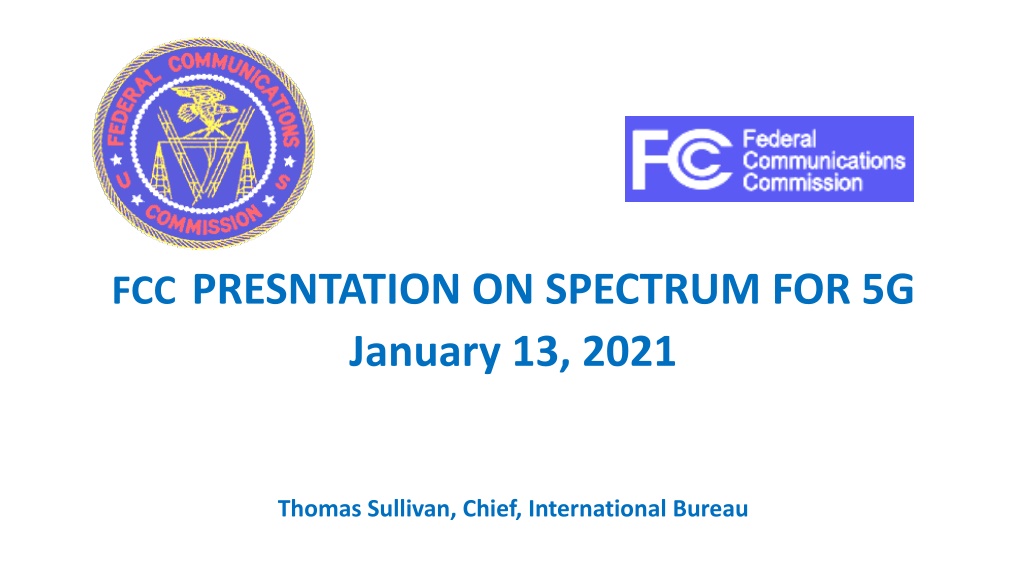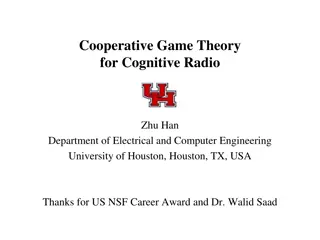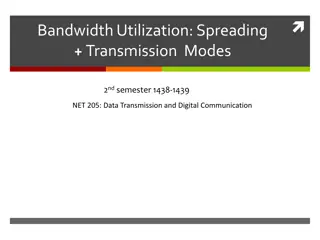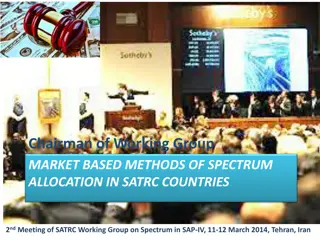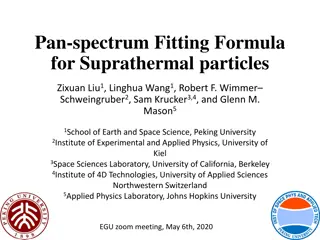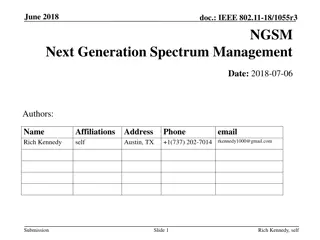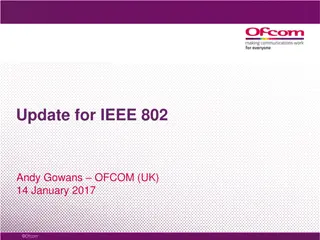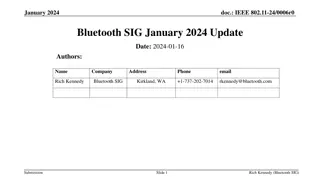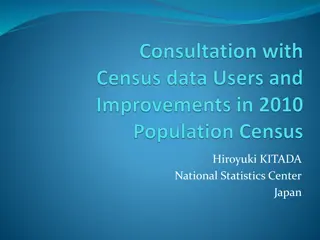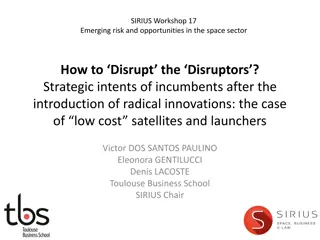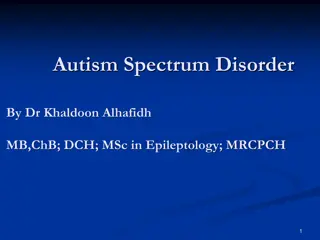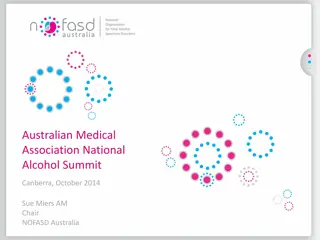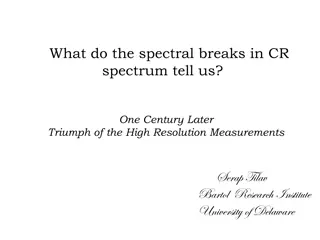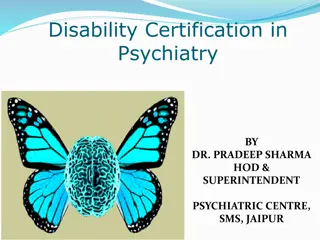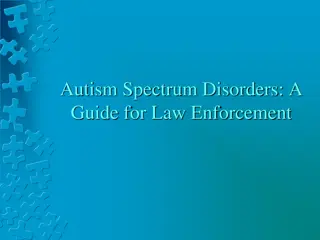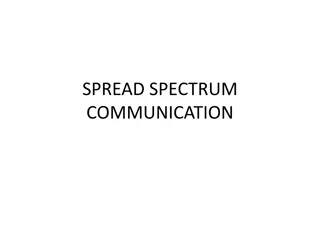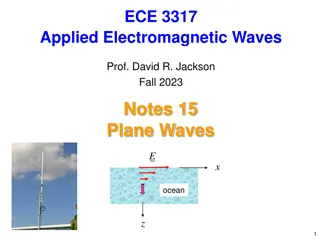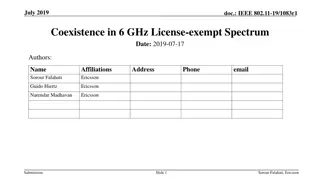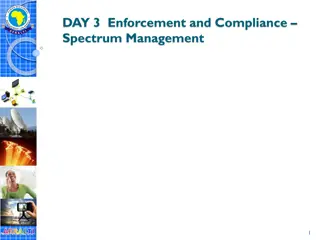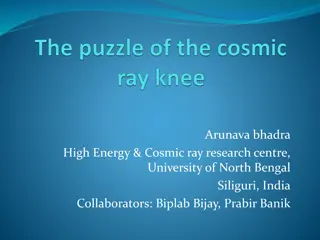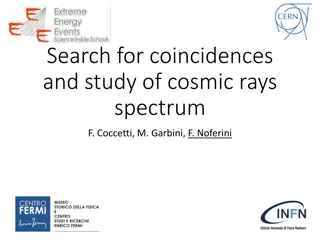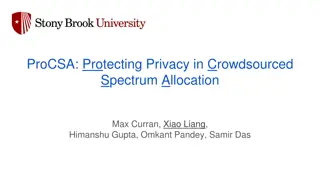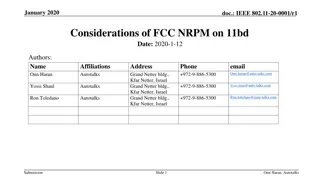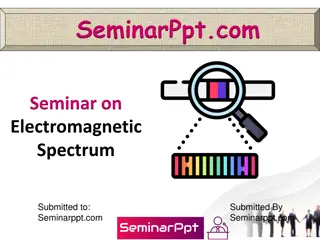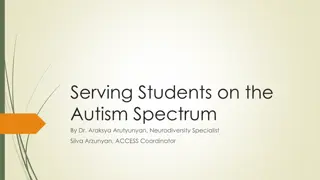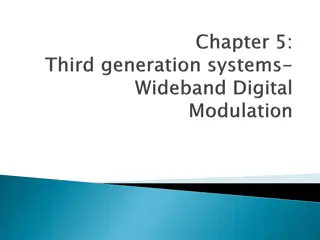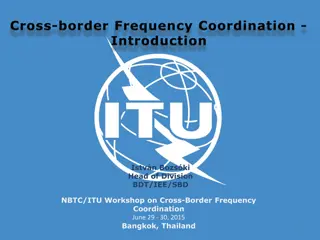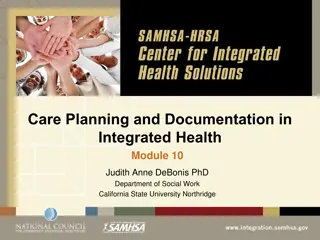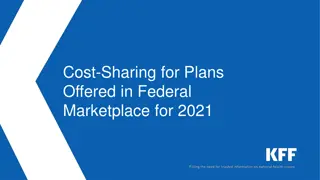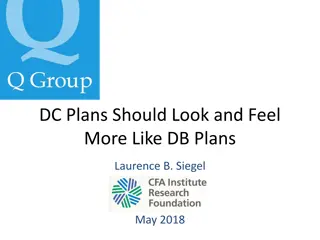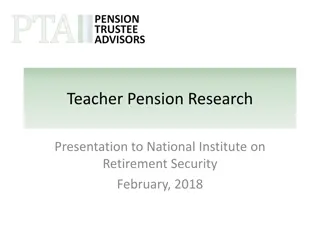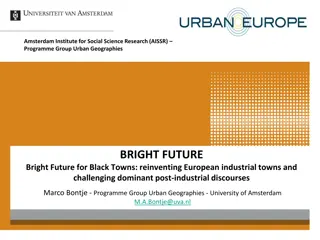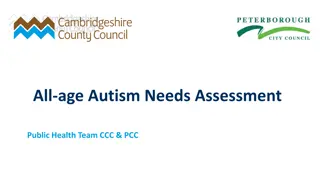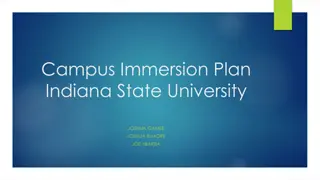The Future of 5G: FCC's Spectrum Plans and Innovations
The FCC's presentation highlighted the importance of spectrum for 5G development, emphasizing the key components of their 5G FAST Plan. The plan focuses on pushing more spectrum into the market, updating infrastructure policy, and modernizing regulations to drive innovation and investment in the U.S. The roll-out of 5G systems is already delivering significant economic growth, job opportunities, and technological advancements. The FCC is actively making various spectrum bands available for 5G deployment, promoting both licensed and unlicensed operations to meet the growing demands of wireless connectivity and support a wide range of applications from smart cities to precision agriculture.
Download Presentation

Please find below an Image/Link to download the presentation.
The content on the website is provided AS IS for your information and personal use only. It may not be sold, licensed, or shared on other websites without obtaining consent from the author. Download presentation by click this link. If you encounter any issues during the download, it is possible that the publisher has removed the file from their server.
E N D
Presentation Transcript
FCC PRESNTATION ON SPECTRUM FOR 5G January 13, 2021 Thomas Sullivan, Chief, International Bureau
FCC 5G FAST Plan FCC 5G FAST Plan Market-based U.S. approach to 5G innovation, investments, and deployment Three key components: (1) pushing more spectrum into the marketplace (2) updating infrastructure policy (3) modernizing outdated regulations Roll-out of 5G systems is underway
Estimated 3 million new jobs, $275 billion in private investment, and $500 billion in new economic growth in the US. Connection speeds over 10 Gbps - 100x faster than 4G. Lag times will be one-tenth of what they are today (50 milliseconds to 1 millisecond). Smart cities and smart transportation networks that reduce traffic, prevent accidents, and limit pollution. Wireless healthcare and remote surgeries. Projection of interrelated 5G service tiers (Image: International Telecommunications Union) Precision agriculture. Industry automation. Impacts of 5G And, of course, 5G will unlock innovations that are yet to be imagined.
FCC: Making Spectrum Available 28 GHz 37 GHz, 39 GHz, and 47 GHz 28 GHz band auction (27.5 GHz 28.35 GHz; 2 x 425) Completed January 2019 [$702.5m] 26 and 42 GHz 24 GHz 24 GHz band auction (24.25 24.45; 25.25 -25.75 GHz; 7 x100) Completed May 2019 [$2.024b] High-band: 37 GHz, 39 GHz, and 47 GHz Largest auction in U.S., releasing 3,400 megahertz of spectrum into the commercial marketplace. Completed March 2020 [$7.569b] Working to free up additional 2.75 gigahertz of 5G spectrum in the 26 and 42 GHz bands 2.5 GHz 2.5 GHz auction planned, potentially in 2021 3.5 GHz 3.5 GHz auction completed August 2020, (7x10) [$4.543b diverse bidders] Mid-band: 3.7-3.98 GHz 3.7-3.98 GHz C-Band auction began December 8, 2020 (14x20) > $80b 3.45 3.55 GHz future opportunity for an additional 100 megahertz (5x20 to align with the 3.7 GHz band) 600 MHz transition from 2016 Broadcast Incentive Auction completed; 5G mobile service rolling-out nationwide Low-band: 600 MHz 800 MHz 900 MHz Targeted changes to 600 MHz, 800 MHz, and 900 MHz bands to improve use of low band spectrum for 5G services 6 GHz above 95 GHz Creating opportunities for Wi-Fi in the 6 GHz, 61-71 GHz and above 95 GHz bands. Recently decided to repurpose the 5.9 GHz (5.850-5.925 GHz) band that has been reserved for use by Dedicated Short-Range Communications (DSRC), to provide greater opportunities for unlicensed while retaining some spectrum for intelligent transportation service. Unlicensed: 4
Unlicensed Operations FCC rules provide for operation of low power radio transmitters without the need for the user to obtain an individual license. These unlicensed (licensed exempt) devices may not cause harmful interference and must accept any interference received. Unlicensed devices predominately operate in 915 MHz, 2.4 GHz, 5.8 GHz. Recent FCC Decisions allow unlicensed operations in the 5.9 GHz and 6 GHz Bands Unlicensed rules (License-exempt is not unauthorized ) designed to minimize likelihood of interference by: Identifying permissible frequencies. Limiting power levels. Requiring equipment authorization. 5
Experimental Licensing Experimental licensing plays a key role in facilitating innovative new products and services while protecting incumbent services against harmful interference. Experimental licenses enable trials of new technologies like 5G. The FCC typically grants more than 2,000 experimental licenses a year. The FCC has a streamlined experimental licensing process for universities, research labs, health care facilities, and equipment manufacturers that frequently conduct trials at a specific location.
FCC Actions for Satellite Services in mmW Bands Preserved the 48.2-50.2 GHz and 40-42 GHz bands for next generation satellite use. Flexibility in FCC s earth station siting rules for the 28 GHz and 39 GHz bands. Permitted individually licensed FSS earth stations in the 50.4-51.4 GHz band. Facilitated innovations and investments in satellite-based services. Allowed NGSO constellations to deliver new options for high-speed broadband service in unserved or poorly served rural areas. Licensed GSO high-throughput satellites to provided new high-speed broadband options for consumers. Updated FCC rules and expanded the frequencies available for Earth Stations in Motion (ESIMs) communicating with GSO networks and established rules for ESIMs communicating with NGSO networks, which will make it easier for consumers who need a broadband connection on a plane, train, or in an automobile to get online. Established an optional new streamlinedapplication process for small satellites with short duration missions. Streamlined the rules and licensing options for satellite operators, easing the path for the rollout of new services.
Beyond mobile, fixed and satellite use! HAPS from WRC-19: 31-31.3 GHz, 38-39.5 GHz, 47.2 47.5 GHz and 47.9 48.2 GHz will be identified for worldwide use by HAPS. Additionally the frequency bands 21.4-22 GHz and 24.25-27.5 GHz by HAPS in the fixed service in Region 2 Millimeter Band Updates in the USA 57-71 GHz: licensed exempt band to provide innovative high-capacity wi-gig type services (wireless gigabyte connectivity to premises) 70/80/90 GHz: June 2020 Order and NPRM 95 GHz and beyond! Also, important passive bands and U.S. federal use present above 24 GHz
The FCC has authorized unlicensed operations in the 57-64 and 64-71 GHz bands 57-71 GHz Unlicensed Spectrum Unlicensed devices such as Wi-Fi-like "WiGig" operate under Part 15 of the FCC's rules. Part 15 includes technical requirements for unlicensed devices to prevent interference. 9
70/80/90 GHz Bands In the U.S., the 70 GHz (71-76 GHz) and 80 GHz (81-86 GHz) bands are used commercially for fixed point-to-point links such as wireless backhaul for 5G. New proceeding in June 2020: 71 76 GHz, 81 86 GHz, 92 94 GHz, and 94.1 95 GHz Bands making more efficient use of additional millimeter-band spectrum resources, considering additional provisions of wireless backhaul for 5G, broadband services to aircraft and ships, and links from Loon and Elefante. 10
Spectrum Above 95 GHz Created a new class of experimental licenses for use of frequencies between 95 GHz and 3 THz. Give innovators the flexibility to conduct experiments lasting up to 10 years, and to more easily market equipment during the experimental period. Freed up 21.2 gigahertz of the Spectrum Horizons bands for unlicensed use: 116-123 GHz band, 174.8-182 GHz band, 185-190 GHz band, and 244-246 GHz band Unlicensed use above 95 GHz is authorized similar to unlicensed use in the 57-71 GHz band. 11
Thank You! Thank You! thomas.sullivan@fcc.gov thomas.sullivan@fcc.gov
